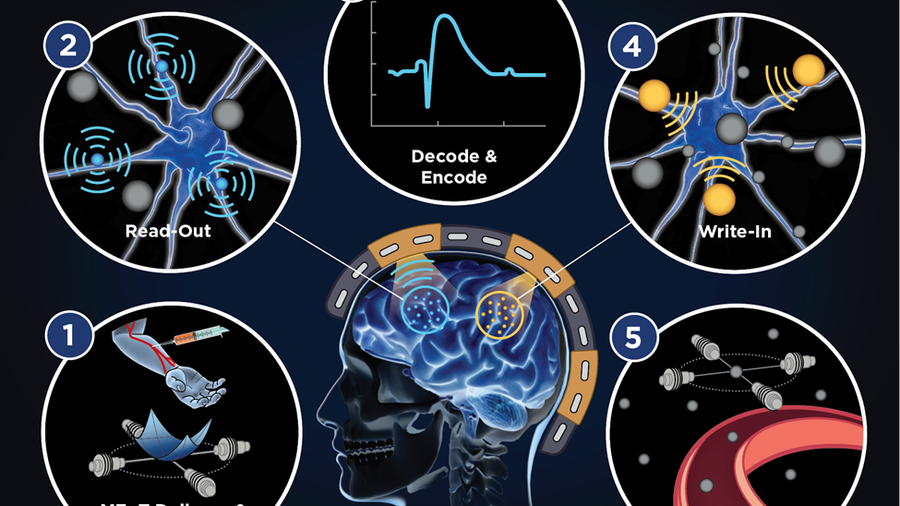Battelle is working to translate its technology that helps a paralyzed man move his hand into a nonsurgical system for soldiers to pilot drones with their thoughts.
Under a $20.4 million, four-year contract from the Defense Advanced Research Projects Agency, the Columbus-based research nonprofit will test futuristic technology it calls BrainStorm. The technology would inject magnetic nanoparticles into the blood and steer them to a precisely mapped area of the brain. Those particles would then transmit signals to and from neurons in communication with receivers in a helmet.
“DARPA likes to take chances on new and innovative technologies for the future,” said Gaurav Sharma, senior research scientist on the original NeuroLife team, who leads the 30 researchers on the new project.
“We have developed a tremendous knowledge base for how to interface with the brain,” he said. “It was like a perfect storm of opportunities, and the right context. We proposed this idea, and DARPA liked it.”

The research builds on Battelle's NeuroLife technology for translating brain cell signals from the motor cortex into electronic pulses that move muscles. For three years it's been refining the system with Ian Burkhart, a Dublin man paralyzed from the shoulders down in a diving accident.
When plugged into the system, he can pinch his finger and thumb together to pick up small objects, pour and stir liquid, and even play Guitar Hero. Artificial intelligence added to the software has made the training exponentially faster.
But he is literally plugged in: Burkhart volunteered for a drastic surgery to implant a chip in his brain and a cable port in his skull to transmit the signals to software, which then controls electrodes in a sleeve on his right arm. Also, it's one way, meaning he can see but not feel the movement.
For DARPA, Battelle has three goals:
- Make the system wireless. When stimulated by magnetic fields, the nanoparticles – it takes 10,000 to span a human hair – would send and receive electronic signals to receivers in the helmet.
- Enable subjects to control objects other than muscles, such as drones, bomb-disposal robots or cybersecurity systems.
- Establish a two-way connection, so the subject can not only control movement but feel feedback, such as wind affecting a drone's flight.
“By creating a more accessible brain-machine interface that doesn’t require surgery to use, DARPA could deliver tools that allow mission commanders to remain meaningfully involved in dynamic operations that unfold at rapid speed," Al Emondi, DARPA's program manager for Next-Generation Nonsurgical Neurotechnology, said in a statement.
The $20.4 million grant is divided into three stages. First comes proving the concept in animal brain tissue that nanoparticles can be transducers that stimulate and record signals from neurons. Next would come tests in live animals that nanoparticles could be injected, directed to a specific area, deliver their signals and then be safely removed from the body. After that, the same thing in humans.
Battelle's collaborators building different aspects of the system are the universities of Miami and Pittsburgh, California-based Cellular Nanomed Inc. and the U.S. Air Force Research Laboratory.
The study will last at least four years, and actual deployment would take much longer, following safety studies and regulatory concerns such as whether this is a medical device or a drug.
If the technology is successful, Sharma said, the healthcare industry would be more open to medical implications, such as for stroke rehabilitation and deep brain stimulation to treat epilepsy or even improve mood.
Researchers will work closely with an ethics board throughout the process.
“(Military leaders) fully understand that any technology … has the potential to be exploited for bad use,” Sharma said. “Those are questions we will be tackling in addition to the science.”
DARPA awarded five other contracts to teams pursuing different methods for nonsurgical brain wave transmission. Pittsburgh-based Carnegie Mellon University, for example, has a $19 million contract using ultrasound.
